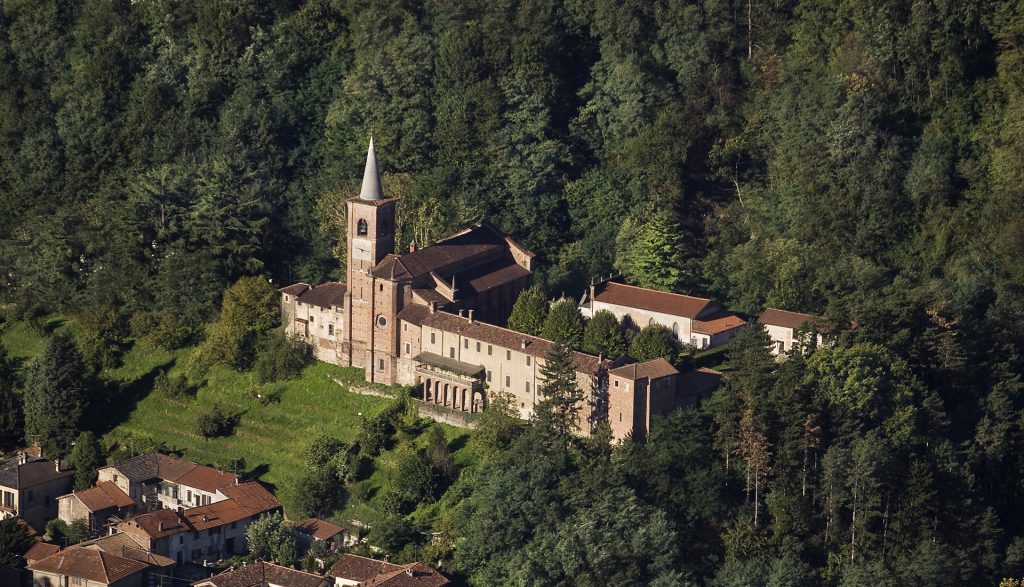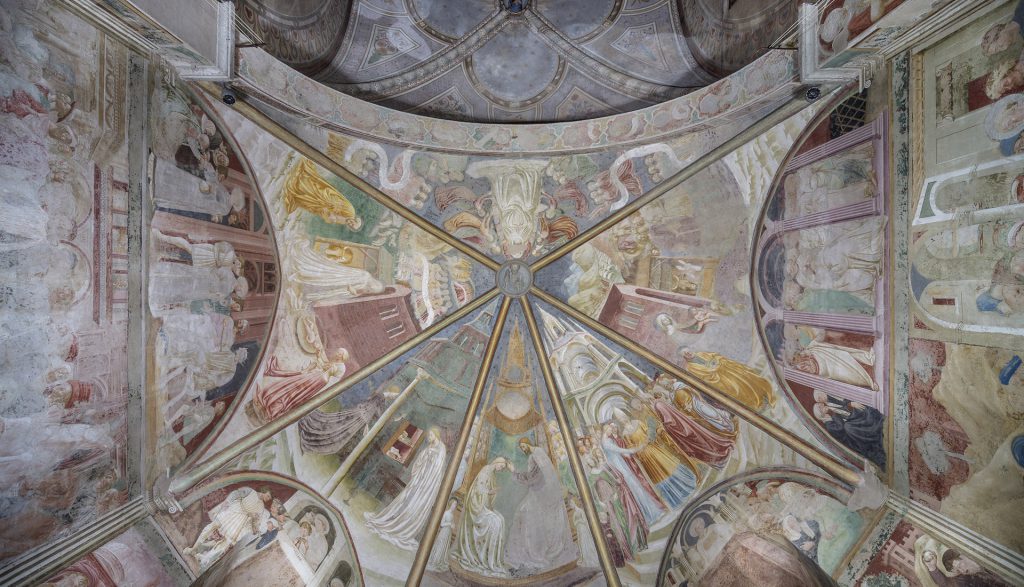
The most important monument founded by Branda is the Collegiate church, built on the top of the upper hill of the village, on the site of the ancient castle.
The church, together with the Baptistery, is part of the Collegiate Museum. Both have been decorated by Masolino da Panicale, one of the most important painters in Florence at the time of the transition from International Gothic to Renaissance. Together with the Sienese Lorenzo di Pietro called “il Vecchietta” and with another Florentine, Paolo Schiavo, who worked with him in the Collegiate apse, Masolino left in Castiglione his masterpiece: the frescoes of the Baptistery, with their fascinating fusion of landscapes and architectures, religious history and Renaissance setting, make the chapel, painted in every centimeter, one of the best achievements of the early Italian Renaissance.

The Museum’s rooms display significant works of art – paintings, manuscripts, goldsmith works –partly belonging to the Collegiate treasure.
Two important panels are assigned to other Florentine painters: the stunning Crucifixion by Neri di Bicci and the small Annunciation by Apollonio di Giovanni, that scholars consider his best work. The 15th century wood and ivory box is a reliquary decorated by pairs and city walls. The fine rock crystal cross shows parts in enamel, gilded silver and gilded copper. The gilded silver goblet is a precious object assigned to 1480s, thanks to the fashion of the garments shown in the enamels.
Testimonials
Thank you MAESTRO MASOLINO! I'm inspired by your exceptional and profund work. It is magnificent. You are a great master! Thank you! Castiglione Olona, 30th May 2012
BILL VIOLA, artist
A very spiritual place. Castiglione Olona, 14th January 2015
WIM WENDERS, filmmaker
I remember the wonderful pleasure I had in Castiglione Olona entering the Baptistery and finding myself immersed in the painting of Masolino as in a fresh Tuscan prairie bloomed with yellow and red flowers. Faville del maglio, Corriere della Sera, 3rd March 1912
GABRIELE D'ANNUNZIO, writer
Opening Hours
Opening Hours
From April to September
Tuesday – Sunday
10.00 a.m. – 1.00 p.m./3.00 p.m. – 6.00 p.m.
From October to Mars
Tuesday – Saturday
9.30 a.m. – 12.30 p.m./2.30 p.m. – 5.30 p.m.
Sunday
10.00 a.m. – 1.00 p.m. / 3.00 p.m. – 6.00 p.m.
Last entry 30 minutes before closing.
Closed on Monday
Tickets
Entrance ticket 6 euros
Reduced ticket 4 euros
Groups (at least 20 people)
Teenagers 6 – 18 years old
Clergymen
Journalists (with certification)
Free entrance
Children under 6 years old
Persons with disabilities
Teachers on duty
Art history students (with University certification)
Tourist guides on duty
Families 16 euros
Photo ticket 6 euros
Groups
The groups are invited to contact the museum in advance.
The entry in the Baptistery is limited to max 15 persons.
Information/reservation:
email: info@museocollegiata.it – ph. + 39 0331 858903




